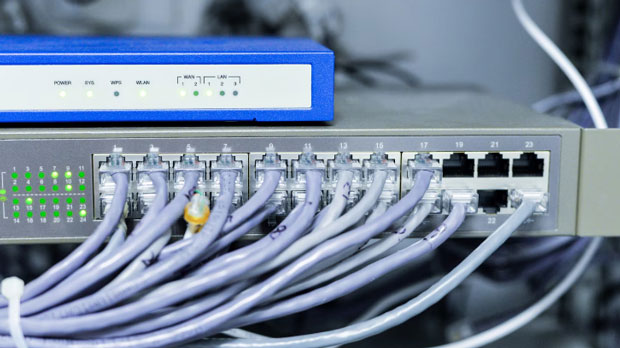In today's competitive e-commerce landscape, understanding your competitors' strategies is crucial for staying ahead. E-commerce merchants often use various tools and methods to gain insights into their competitors' activities. One such tool is the SOCKS proxy service, which allows businesses to perform competitor analysis in a more anonymous, secure, and efficient way. By routing internet traffic through a proxy server, merchants can gain access to competitor websites, monitor pricing strategies, analyze product offerings, and gather valuable data without being detected. This article delves into how e-commerce merchants can make the most of SOCKS proxy services to perform detailed competitor analysis, and why this approach is indispensable for modern e-commerce growth. What is SOCKS Proxy and Why Should E-commerce Merchants Use It?A SOCKS (Socket Secure) proxy is a type of internet protocol that facilitates communication between a client (such as an e-commerce merchant) and the internet, typically by acting as an intermediary. Unlike HTTP proxies, which are tailored for web browsing, SOCKS proxies work at a lower level and can support any type of internet traffic, whether it be browsing, email, or file sharing. This makes SOCKS proxies an ideal solution for e-commerce merchants looking to conduct in-depth competitor analysis.The core advantage of SOCKS proxies lies in their ability to mask the merchant’s IP address. This anonymity helps to protect the user from being blocked or detected by competitor websites. By routing requests through multiple proxy servers located in different geographic regions, merchants can appear as if they are browsing from various locations, making it easier to simulate real-world market conditions.How Can Merchants Use SOCKS Proxy for Competitor Analysis?1. Monitor Competitor PricingOne of the primary uses of a SOCKS proxy for competitor analysis is monitoring competitor pricing. By accessing competitor websites through proxies, merchants can view product listings and prices without revealing their identity. This allows for real-time price comparison, which is crucial for setting competitive prices, identifying pricing trends, and adjusting strategies accordingly.Merchants can also monitor fluctuations in prices over time, track promotions, or identify the timing of price changes. With this information, they can adjust their pricing strategies to stay competitive and increase their market share.2. Analyze Competitor Products and OfferingsAnother critical aspect of competitor analysis is evaluating their product offerings. SOCKS proxies provide merchants with the ability to gather detailed product data from competitor websites without being detected. This data can include product descriptions, images, specifications, and customer reviews. By using multiple proxy locations, merchants can analyze how different regions perceive the same products, identifying regional preferences and tailoring their inventory to meet those demands.Merchants can also track product availability, new product launches, and inventory levels. This insight can help businesses identify gaps in the market or new opportunities for product expansion.3. Conduct Competitor Website Traffic AnalysisUnderstanding competitor traffic is vital for refining marketing and advertising strategies. Using SOCKS proxies, merchants can access tools like SimilarWeb, Alexa, or SEMrush to analyze competitors' traffic sources, demographics, and online behavior. By simulating traffic from different regions, e-commerce businesses can identify where their competitors are getting their traffic from, which channels are most effective, and what marketing campaigns they are running.This data can guide e-commerce merchants in designing more effective digital marketing strategies, optimizing their website for better SEO rankings, or identifying untapped traffic sources.4. Scrape Competitor Data for Market ResearchAnother significant benefit of using SOCKS proxies is the ability to scrape large amounts of competitor data for market research. Web scraping tools, when used with SOCKS proxies, allow merchants to gather comprehensive data from competitors' websites, including product listings, prices, customer feedback, and even sales volume estimates. This information can be invaluable for understanding market trends, customer preferences, and competitor performance.By regularly scraping competitor websites, merchants can stay updated on shifts in the market, emerging product trends, and changes in competitor strategy. This can give them the edge when deciding which products to launch or which markets to target.5. Test and Optimize Marketing StrategiesE-commerce merchants can also use SOCKS proxies to test their own marketing strategies on competitor websites. By analyzing competitor ad placements, landing pages, and call-to-action strategies, merchants can gain insights into what works and what doesn’t in their industry. They can also test how different content strategies perform in various regions, adjusting their own campaigns accordingly.For example, a merchant can monitor how their competitors are running ads on Google or Facebook and what audience segments they are targeting. By using SOCKS proxies, they can simulate browsing behavior from different geographical locations to identify which regions yield the best results for particular campaigns.Benefits of Using SOCKS Proxy for Competitor Analysis1. Enhanced Anonymity and SecuritySOCKS proxies provide a higher level of anonymity compared to traditional proxies. Since SOCKS proxies do not transmit identifying information like the client’s real IP address, they offer enhanced security for e-commerce merchants. This is essential for avoiding detection by competitors who might block or restrict access to their sites based on suspicious activity. Additionally, SOCKS proxies ensure that competitors cannot track the merchant’s web browsing activities, providing a layer of privacy in highly competitive markets.2. Multiple Location CoverageSOCKS proxies allow e-commerce merchants to connect to servers from different locations around the world. This capability helps businesses simulate browsing from various regions, enabling them to understand how competitors are positioning themselves in different markets. For example, by simulating traffic from the United States, merchants can analyze how U.S.-based competitors price their products, compare offers, and gain insights into local consumer behavior.3. Bypass Geographical RestrictionsMany competitor websites may have region-specific content or restrict access from certain geographic locations. By using SOCKS proxies, e-commerce merchants can bypass these restrictions and access full website content. This enables them to gather more comprehensive data on competitors, including regional pricing, promotions, and localized marketing strategies.4. Increased Efficiency and AutomationSOCKS proxies can be easily integrated with web scraping and automation tools, making the data collection process faster and more efficient. E-commerce merchants can automate the process of monitoring competitor websites, collecting pricing data, and analyzing product offerings without having to manually visit multiple websites. This saves time and allows merchants to focus on higher-level strategy development and decision-making.Challenges of Using SOCKS Proxy for Competitor AnalysisWhile SOCKS proxies offer significant benefits for competitor analysis, there are a few challenges that e-commerce merchants should be aware of. First, using proxies for scraping and automated data collection may violate the terms of service of certain websites. It is essential for merchants to use proxies responsibly and ensure they are compliant with legal and ethical standards.Additionally, managing multiple proxies and ensuring the quality of the data collected can be time-consuming. Merchants must ensure they are using reliable proxy providers and regularly maintain their systems to avoid disruptions in their competitor analysis efforts.In an increasingly competitive e-commerce world, leveraging SOCKS proxy services for competitor analysis is becoming a crucial strategy for businesses aiming to stay ahead. By providing anonymity, security, and the ability to bypass geographical restrictions, SOCKS proxies allow merchants to gather vital data on pricing, products, website traffic, and more. However, to maximize the benefits, merchants must use proxies ethically, ensure compliance with regulations, and integrate them into a broader data-driven strategy. Ultimately, SOCKS proxy services offer e-commerce businesses a powerful tool for gaining a competitive edge and making informed decisions in the marketplace.
Sep 28, 2025


































































